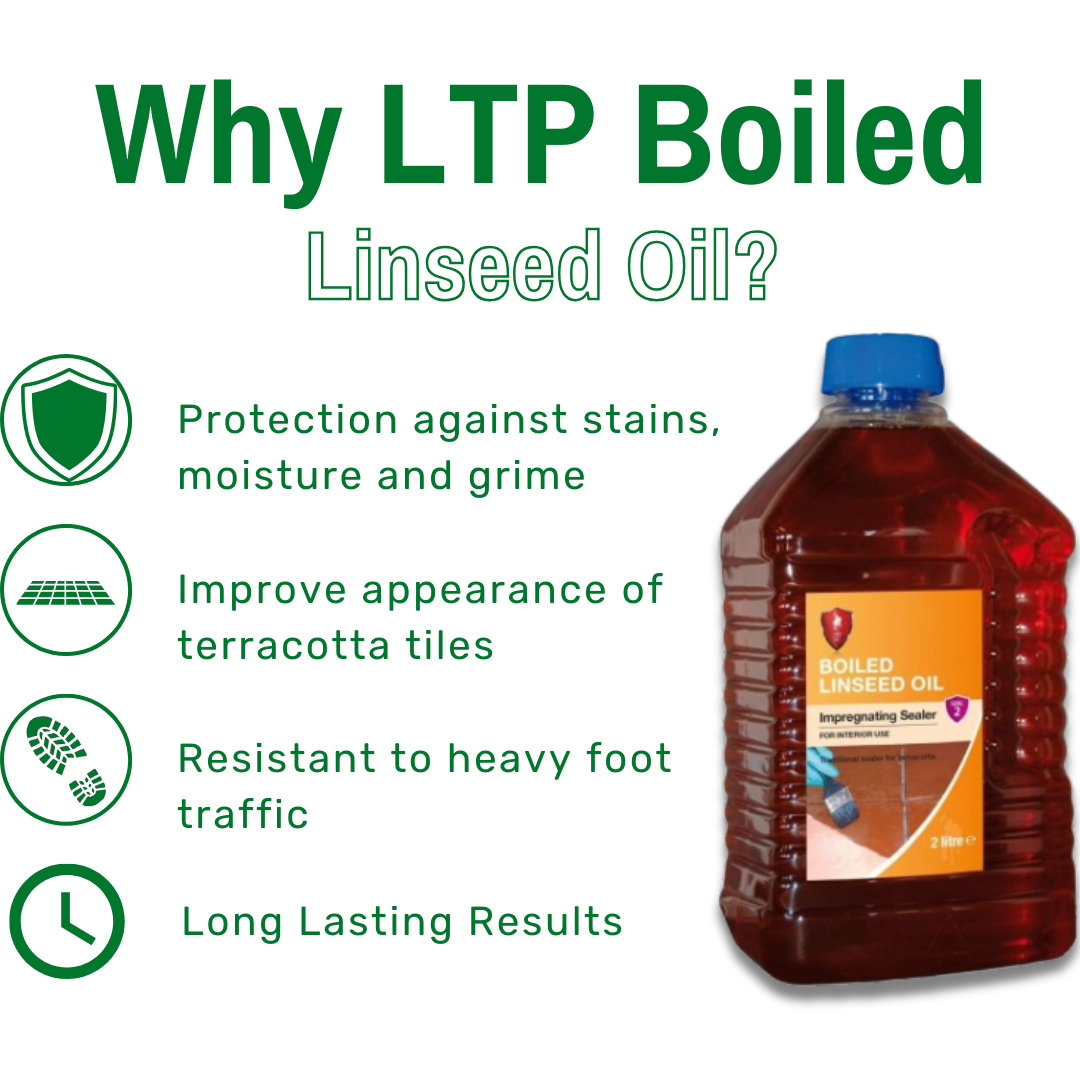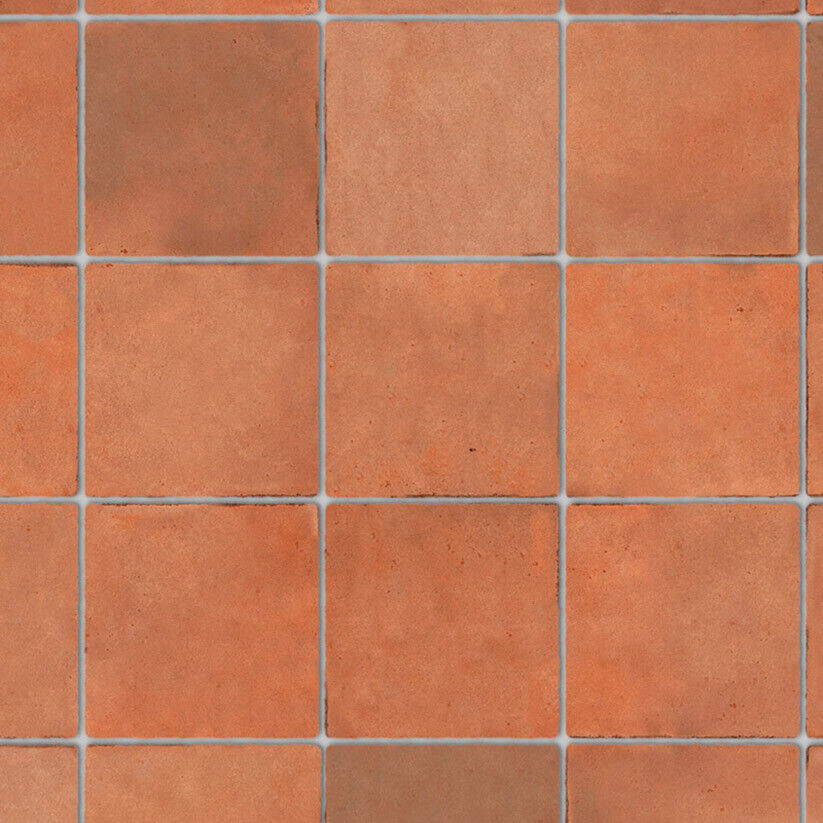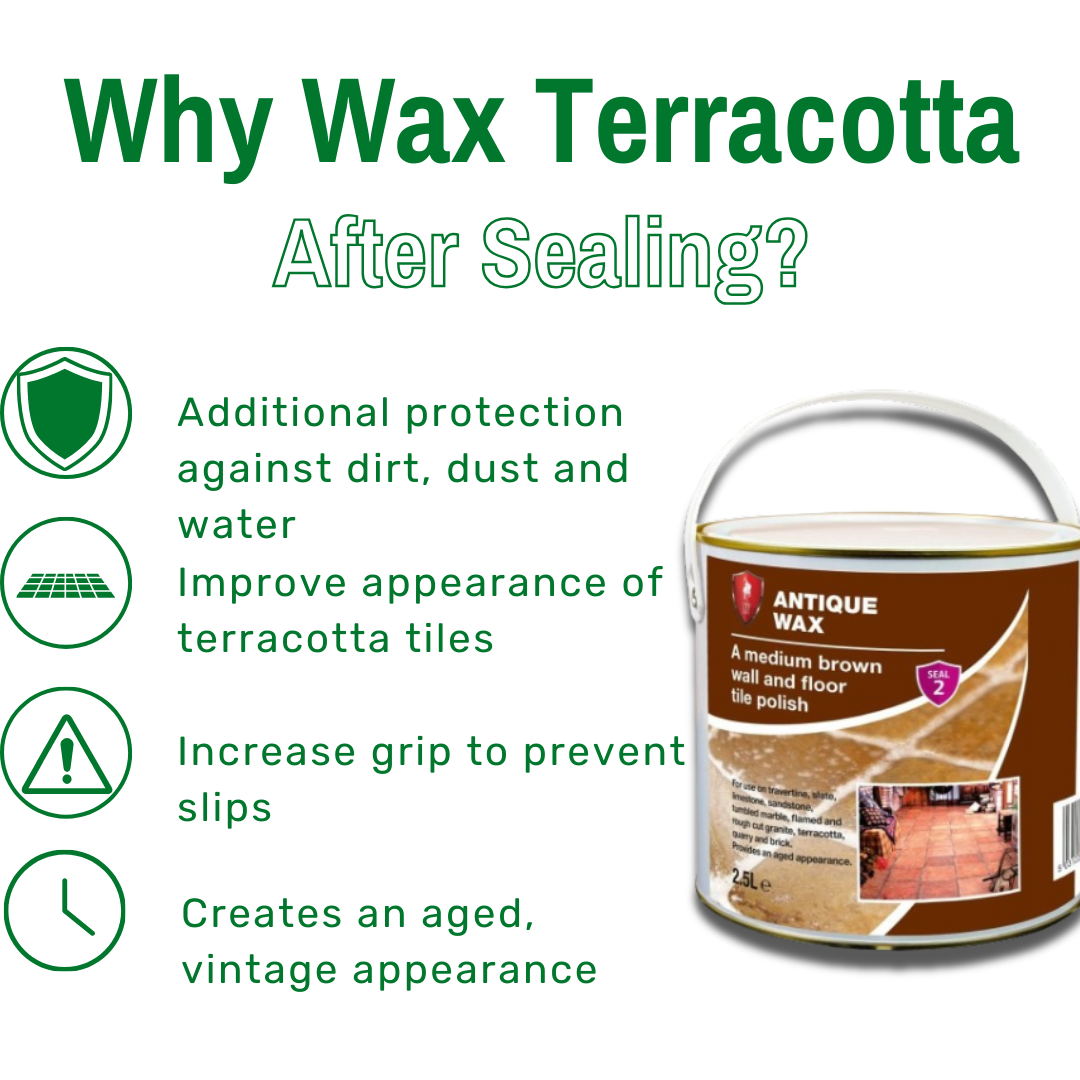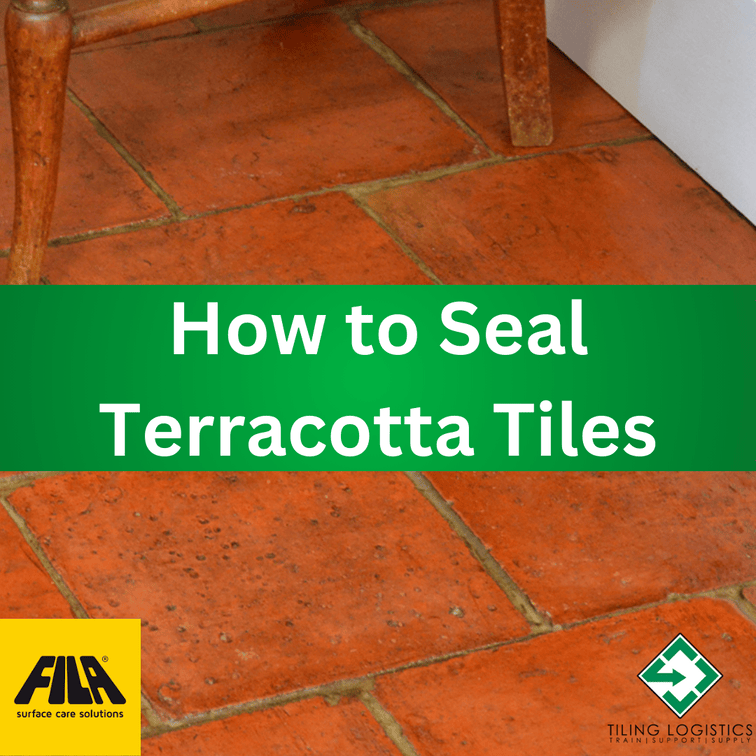We use cookies to ensure that we give you the best experience on our website. If you continue to use this site we will assume that you are happy with it. Learn more
How to seal your terracotta floor tiles with linseed oil
How to seal and protect your terracotta floor tiles
Today, I will take you through a step-by-step guide detailing the best way to protect terracotta floor tiles against stains and enhance them with a golden glow. This technique is suitable for freshly installed terracotta floors or long-standing surfaces.
Read this article to learn how to seal terracotta tiles to protect and enhance your floors.
This method of sealing terracotta tiles creates a powerful aesthetic and greatly increases a surface’s durability. This method of sealing terracotta tiles actually comes from LTP, the manufacturer of the products we will use. They suggest this method to get the most visibly appealing results out of the tile sealer.
The equipment you need to seal terracotta floor tiles
First of all, you will need LTP Boiled Linseed Oil. This golden tile sealer is a rich oil that offers protection to and enhances both machine and hand-made terracotta.
It does this by filling the pores in the surface and then hardening to prevent any liquids and grime from entering.
You’ll also need LTP Antique Wax to enhance that golden hue. It is a medium brown wall and floor tile polish that will provide your terracotta tiles with a slightly aged appearance and brilliant shine.

Why linseed oil is used to seal terracotta
Linseed oil is a traditional and age-old solution for preserving and enhancing the beauty of terracotta surfaces. Boiled linseed oil, such as the LTP Boiled Linseed Oil from Tiling Logistics, offers a range of benefits for terracotta tiles, ensuring they remain vibrant and protected for years to come.
This eco-friendly treatment not only enhances the natural hues and textures of terracotta but also provides a protective barrier against moisture, stains, and environmental factors. By sealing the porous surface of terracotta tiles, linseed oil prevents premature decay and contamination, extending the life of your outdoor living spaces.
In the age of sustainable living, embracing terracotta and employing eco-friendly solutions like linseed oil sealing is a testament to our commitment to preserving the beauty of nature while creating enduring outdoor havens for generations to come.
How to seal terracotta floor tiles - Protection against grime and staining
1. Apply LTP Boiled Linseed Oil
Apply LTP Boiled Linseed Oil to the surface, one brush stroke at a time. Do this until the tiles are completely saturated.
Typically, terracotta surfaces take 1 or 2 coats to become completely saturated; however, some surfaces may require up to 5 coats. Allow around 4 hours between each coat.
2. Let the oil act on the surface
After application, wait up to 12 hours for the sealer to cure. After 24 hours, the surfaces will totally dry.
3. Apply LTP Antique Wax
After 24 hours, apply LTP Antique wax with a microfibre cloth in small, manageable sizes at a time. Stir the wax well before application.
4. Buff the surface
Quickly buff wax to a shine using a stiff brush or microfibre cloth.
Get started now
That's how you use boiled linseed oil to seal and enhance terracotta sealers, protecting them from water and grime.
Start sealing your terracotta flooring today!
After sealing your terracotta floor tiles
To maintain the surface to its full potential, wash your terracotta tiles with LTP Waxwash.
Ensure that areas, where the seal has been worn or damaged, are re-waxed.
In which case, apply a fresh coat of LTP Antique Wax to the surface should it begin to show signs of stain absorption.
This should be done after the surface has been washed and allowed to thoroughly dry.
About terracotta floor tiles

Terracotta's enduring popularity lies in its ability to strike a perfect balance between aesthetic appeal and practical durability. The rich, earthy tones and distinctive texture of terracotta tiles lend a sense of authenticity and character to any outdoor setting. Whether used for paving, accent walls, or decorative elements, these tiles effortlessly complement a wide range of architectural styles, from rustic to contemporary.
One of the most compelling reasons to embrace terracotta in outdoor living spaces is its eco-friendly nature. As a natural, clay-based material, terracotta is a sustainable choice that aligns with the growing trend of environmentally conscious living. Unlike synthetic materials, terracotta is derived from the earth, reducing its carbon footprint and minimizing its impact on the planet.
British homeowners who are lucky to have outdoor spaces and empty garden corners, homeowners are rediscovering the beauty of well-preserved and protected terracotta. This natural clay-based material has graced patios, gardens, and outdoor living areas for thousands of years, offering a warm and rustic appeal that gives us a little dopamine hit with it's beauty. This beautiful stone's inherent durability ensures that it can withstand the test of time and harsh weather conditions, making it an ideal choice for outdoor use, or to gaze at from under the shade of a garden pergola or BBQ patio area.
As the desire for sustainable and eco-friendly living continues to grow, terracotta emerges as a prime choice for those seeking to create a harmonious bond between their homes and the great outdoors. Terracotta is a great option for outdoor kitchens in comparison to the mess of cheap or disposable barbecues where you'll spend more time cleaning than actually cooking food.
Why LTP Antique Wax?
LTP Antique Wax is a soft paste wax, blended from three types of wax that give treated surfaces an excellent shine.
It is a medium brown wall and floor tile polish that provides a resilient protective layer against water, dust, dirt and a variety of commonly found household contaminants.
LTP Antique Wax comes ready to use and is easily applied with a cloth before polishing to a finish.
It provides surfaces with an aged appearance.
After sealing - Why you should wax terracotta floors

More Durable Tiles
A key benefit to waxing your floors is sustainability.
Wax has always been good protection for floors due to its prevention of scratches, nicks and stains caused by spills. It preserves your floor surfaces, which is best for high-traffic areas due to the increase in the surface's durability.
Another advantage is that it adds light to a room. A beautiful waxed floor not only enhances the rooms and spaces but also gives them a lighter feel.
Remove Defects & Enhance Aesthetic
Waxing the surface will also make any defects if any, less obvious. Not everything can be controlled. Accidents will happen and floors will eventually get dents and marks that won't be entirely removed.
In this case, good floor waxing will help make these defects less noticeable.
Improve Floor Safety
Another benefit is the security it provides. Despite anything, a fall can be costly for anyone in some form.
In short, floor wax provides enough grip on the floor, preventing slips even when the floor is wet.
To conclude, a layer of wax will give your surface more beauty and it brings brightness out of the room. It will give the entire room a clean look and give it that bit of sparkle that you thought you were missing, all while having excellent gripping characteristics.
More Information
Read the technical data sheet for LTP Boiled Linseed Oil or Antique Wax.


